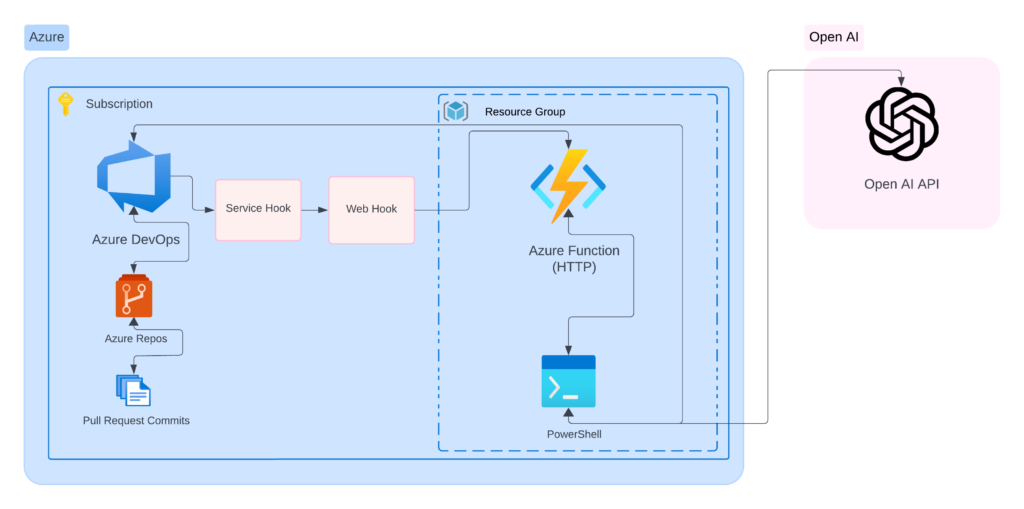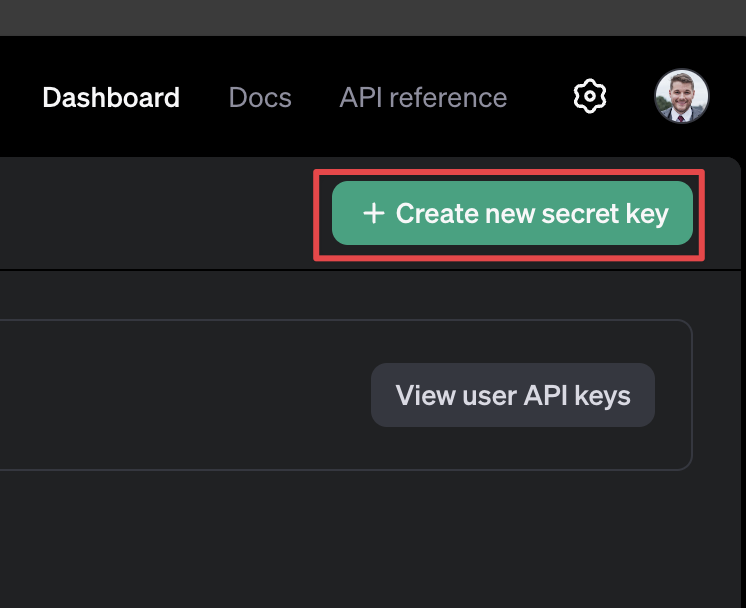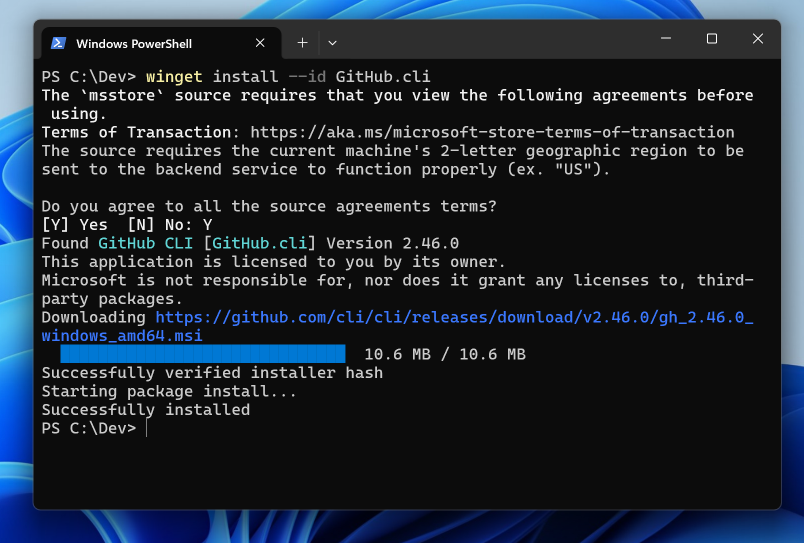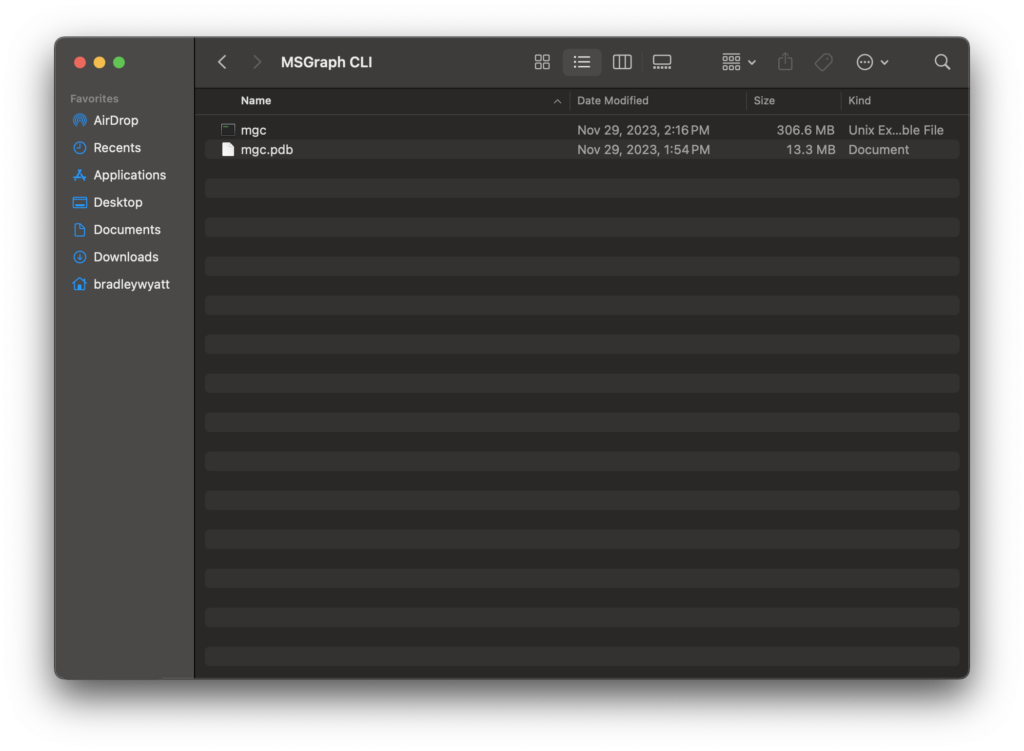Leveraging OpenAI to Enhance Pull Request Management in Azure DevOps
Objective
Our goal is to create an automation that significantly enhances the efficiency of our development process. A service hook is triggered when a new Pull Request is created in Azure DevOps, sending a webhook to an Azure Function. This function analyzes the request body, gets all commits in the Pull Request, and sends it to Open AI’s API, which generates a Pull Request message detailing all of the proposed changes from the commits and writes it back to the Azure DevOps Pull Request.
The diagram below gives a high-level overview of how automation works from start to finish.

OpenAI
Generate a new API Key
The first step is to obtain an OpenAI API key to interact with the API. To do so, go to the following website.
Once you have signed in, click + Create new secret key

Give it a descriptive name, and for permissions, in my … Continue...



